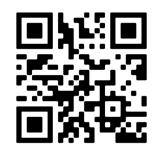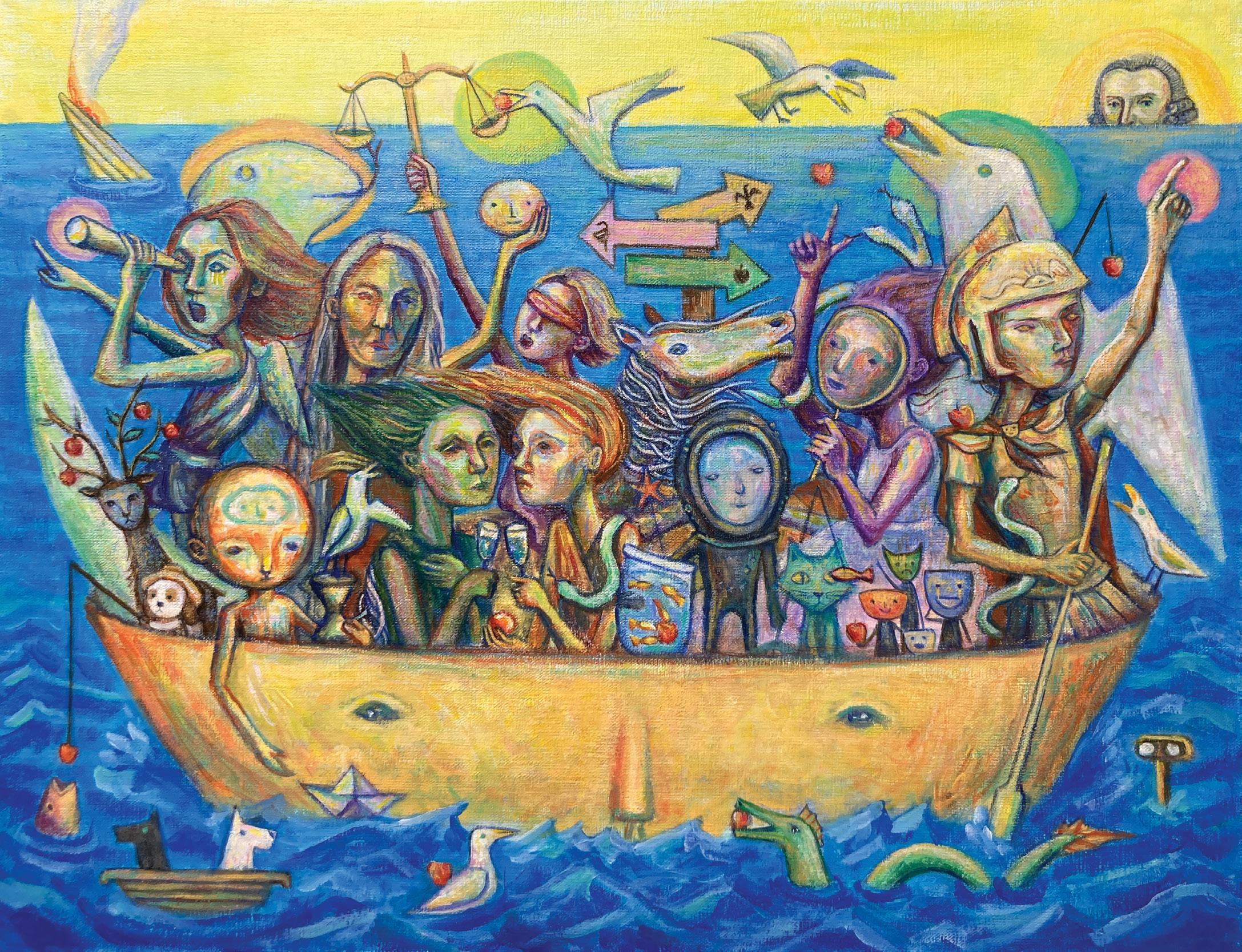
The Ampersand
stories
ideas in Arts & Sciences at Washington University in St. Louis. It is published semiannually and distributed to alumni, faculty, students, staff, and friends of Arts & Sciences.

ampersand@wustl.edu
ampersand.wustl.edu


The Ampersand
stories
ideas in Arts & Sciences at Washington University in St. Louis. It is published semiannually and distributed to alumni, faculty, students, staff, and friends of Arts & Sciences.

ampersand@wustl.edu
ampersand.wustl.edu
In 1922, working in Eads Hall, an Arts & Sciences faculty member named Arthur Holly Compton revolutionized our understanding of light and its dual particlewave behavior. His discovery helped lay the groundwork for scientists’ quantum mechanical understanding of nature.
This fall, one hundred years after Compton’s foundational experiments, Arts & Sciences launched the Center for Quantum Leaps. Our bold vision for the center draws upon deep expertise in Arts & Sciences, the McKelvey School of Engineering, and the School of Medicine, and it promises to transform the field yet again. We are already making great strides: We’ll soon welcome the next generation of pathbreaking quantum researchers to our campus as part of the National Science Foundation’s premier graduate research training program (p. 8).
Across Arts & Sciences, our faculty are pioneering bold collaborations in education and research. Our Center for the Humanities recently launched innovative studiolab courses — interdisciplinary investigations that model the future of humanist inquiry and learning. Our Center for the Literary Arts is set to transform literary creative practice by establishing WashU as a global hub for writers, translators, and public intellectuals. And Arts & Sciences’ Incubator for Transdisciplinary Futures is helping build the university of tomorrow by sparking forward-looking collaborations throughout all seven WashU schools. These audacious ideas will shape the landscape of liberal arts education and research for decades to come.
We are investing in these efforts to help address some of the world’s most pressing issues — challenges that will require us to harness advanced technologies and transdisciplinary thinking for the benefit of our communities and our planet.
For example, in these pages, you’ll read about scholars whose work in environmental justice (p. 14) touches communities near and far by investigating flood risks, mitigating parasitic infections, and examining how injustices have shaped our regional history and impacted the ecological arts. You’ll also learn about a cohort of alumni who are advancing the field of digital mental health (p. 28), harnessing technology to help communities by connecting patients with critical resources and expert care.
Now, as I walk past Eads Hall to Brookings each morning, I’m reminded of so much more
the
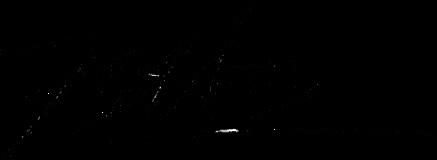
legacy that building holds. I think of the students and faculty
this campus in decades past, the ones who will do so decades from now, and the myriad ways they will better our world.
a place for innovation, a place for transformation, and a place at
leading edge of scholarship. I am incredibly proud to be part of this school, at this bold moment, and I’m honored to count you among our community.


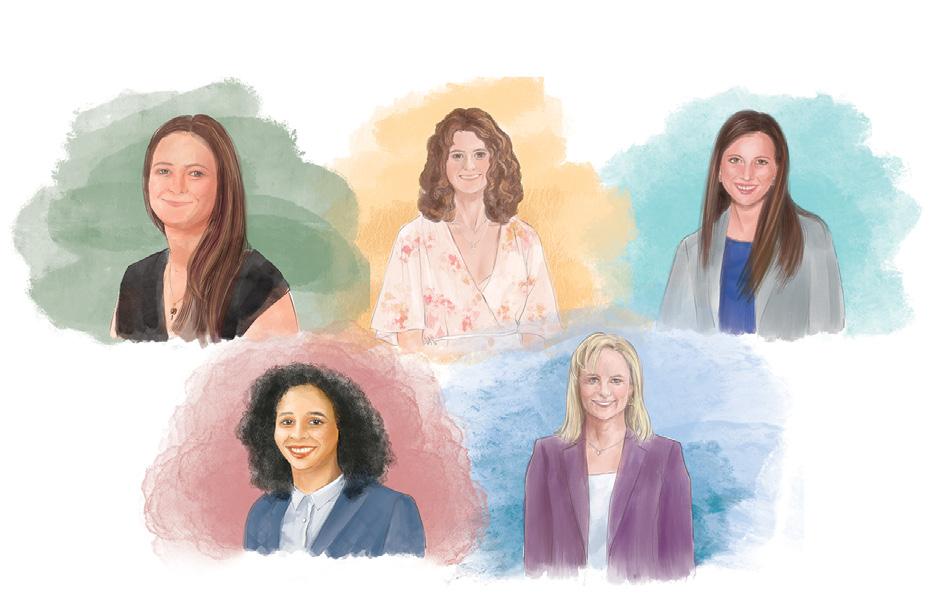

A
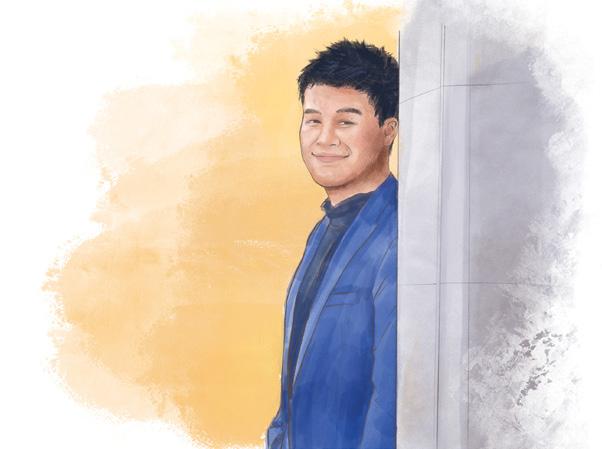
For

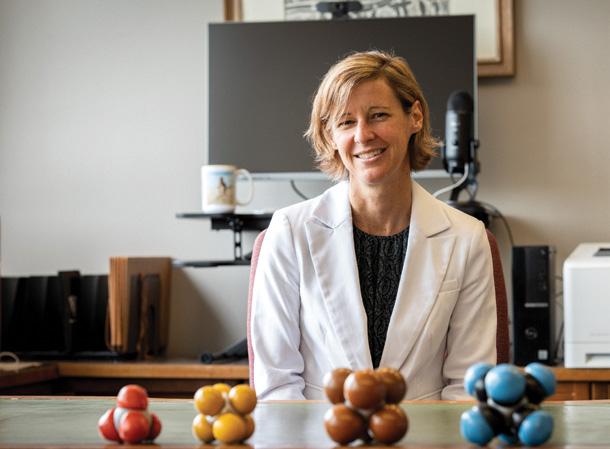
Barbara Morgan Detjen,

’70, shares

Graduate
Earlier this spring, Arts & Sciences launched a new internal grant program, “Seeding Projects for Enabling Excellence & Distinction” (SPEED), with the goal of spurring novel and impactful
scholarship, and creative practice initiatives. The winners represent disciplines across Arts
Sciences, from film and media studies to anthropology to biostatistics. Read more about one of the
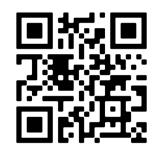
projects — led by anthropologist Theresa Gildner — on p. 17.
aim of
Feng Sheng Hu Dean of Arts & Sciences Lucille P. Markey Distinguished ProfessorI’m
and it

Physicists led by Brian Rauch are developing a new experiment envisioned for the International Space Station as part of NASA’s Astrophysics Pioneers Program. The Trans-Iron Galactic Element Recorder for the International Space Station (TIGERISS) will be designed to measure the abundances of ultra-heavy galactic cosmic rays. At the end of the five-year TIGERISS mission, the team’s measurements will increase our understanding of how the galaxy produces and distributes elements from boron to lead. Program missions have a total cost cap of $20 million.
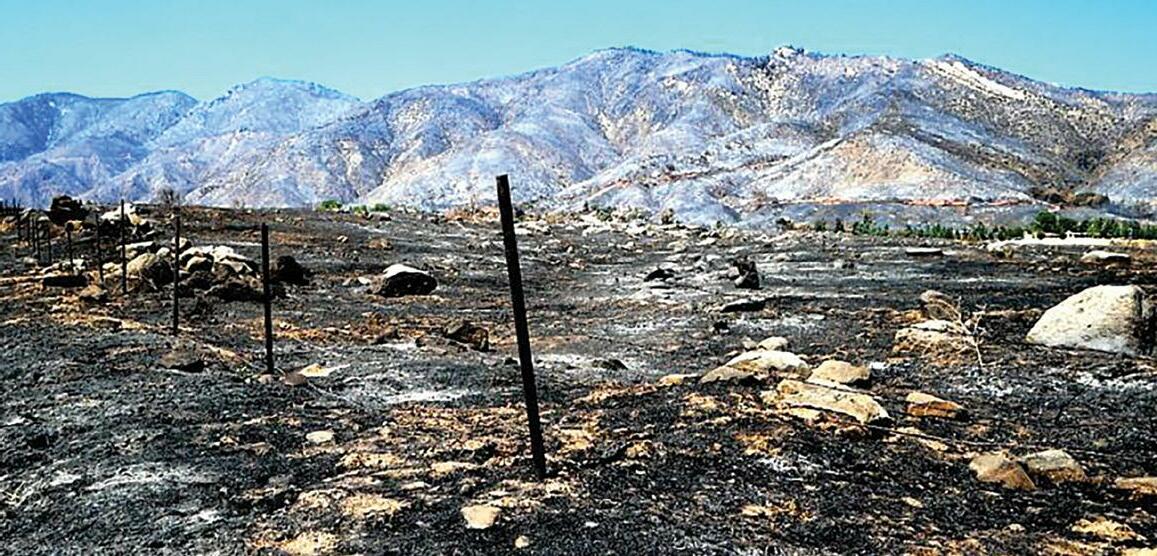
In a new piece to be performed in November by New York-based Unheardof Ensemble, award-winning composer Christopher Stark combined field recordings from the 2020 California wildfires with sonic and visual imagery from personal trips across Montana, Oregon, and California. Video artist Zlatko Ćosić created an accompanying film that uses footage collected from the American heartland around Missouri. “Fire Ecologies” is a 55-minute unique musical and visual experience that explores American landscapes through the lens of climate change.
Stephanie Kirk, professor of Spanish, comparative literature, and women, gender, and sexuality studies, now directs the Center for the Humanities. Kirk is an expert on the literature and culture of colonial Latin America with a particular emphasis on gender studies and religion. She succeeded Jean Allman, the J.H. Hexter Professor in the Humanities, who had directed the center since 2014.
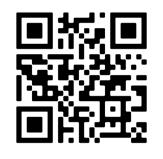

As part of their signature research traineeship program, the National Science Foundation (NSF) is investing $3 million in a new graduate student training program for aspiring scientists and educators who want to explore careers in quantum science at St. Louis-area research laboratories, private companies, and other facilities. Chemist Sophia Hayes, who serves as vice dean of graduate education, and physicist Kater Murch will lead the effort to establish a convergent quantum sciences and engineering graduate training program across the St. Louis region, “Linking Quantum Sensing Technologies Across Disciplines,” or LinQ-STL.
will connect research efforts among Washington University, the University of Missouri-St. Louis, Saint Louis University, and Harris-Stowe State University. The project anticipates training 100 students, including 40 funded trainees from chemistry, physics, computer science, electrical engineering, and systems engineering doctorate programs. The effort is focused on quantum sensors, which rely on the unique physical properties of nature at the atomic and subatomic scales to detect phenomena that evade identification in the human-scaled realm of lived experience. As this type of quantum behavior finds increasingly more applications, there is a growing need for a workforce prepared to discover, develop, and deploy the science and engineering advances in this emerging field.
Departments of Chemistry and Physics
Alumni of the Pathfinder Program in Environmental Sustainability returned to WashU in early September to celebrate Raymond E. Arvidson, now the James S. McDonnell Distinguished University Professor Emeritus. Arvidson and his wife, Eloise (front row center), worked closely with Pathfinder and Hewlett students, traveling with them to conduct field work and offering mentorship that many alumni cite as integral to their WashU experience.

After two years of delays and restrictions due to the pandemic, graduate students are once again trekking to field sites around the world for their dissertation research. Doctoral candidate Melissa Ritchey’s research takes place in mountainous regions of central Asia, where she uses excavated plant matter to examine how labor choices affected Bronze Age agriculture. She hopes her research will give insight into how ancient peoples were able to grow crops in extreme conditions.
FHow does episodic memory — the neurocognitive system that enables conscious recollection of previously experienced events — figure into our sense of time and its passing? Carl Craver, a leading figure in the philosophy of science, received a grant from the National Science Foundation to explore how people with episodic amnesia understand the passage of time. He hopes these case studies might shed light on philosophical questions about the relationship between memory and selfhood.
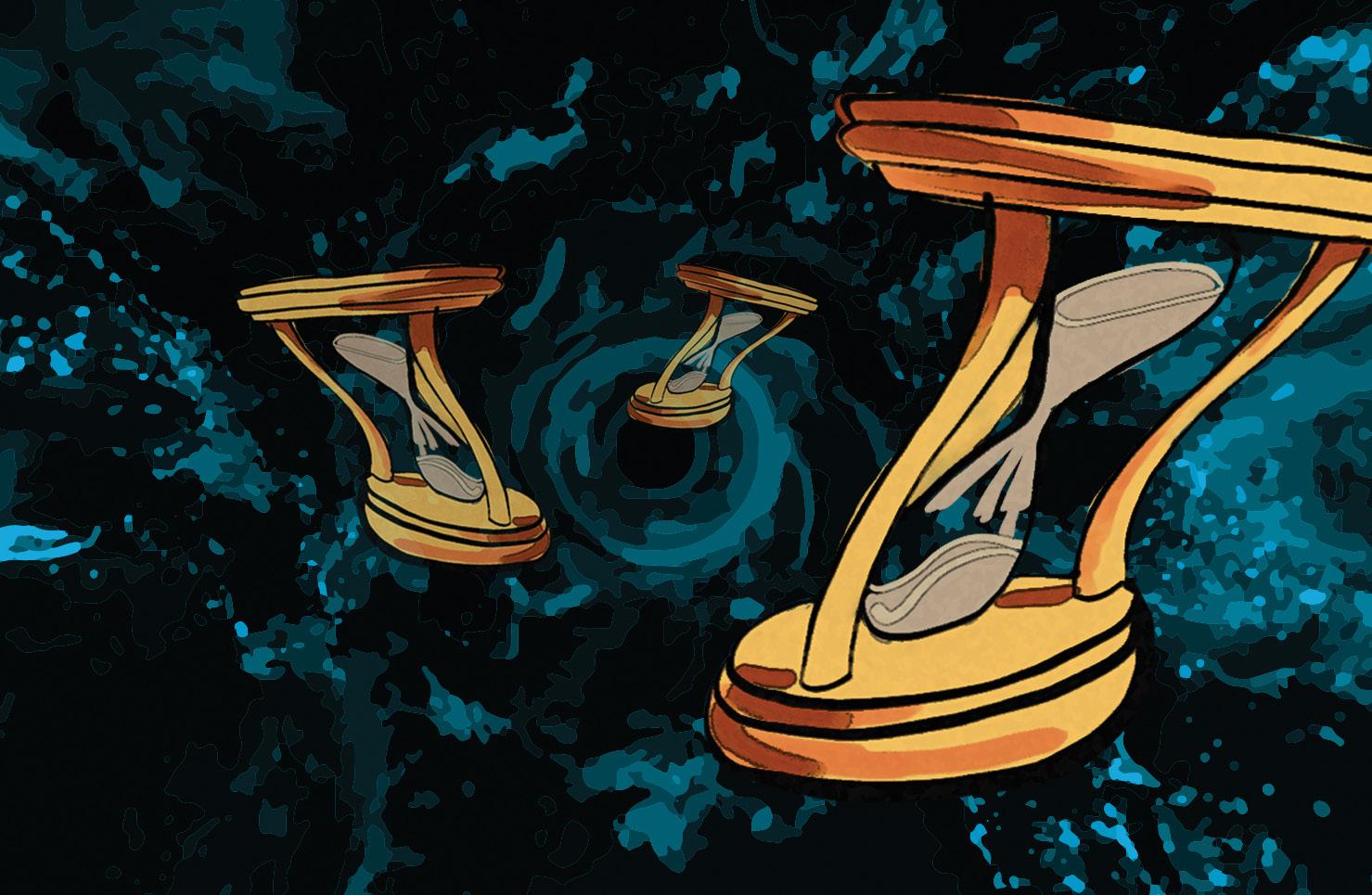 Department of Philosophy
Department of Anthropology
Department of Philosophy
Department of Anthropology
On a sunny day in September, members of the Arts & Sciences community gathered for lunch and conversation at the First Look Fair, an opportunity for leaders of Arts & Sciences’ signature initiatives to share their vision and progress. Several of the initiatives have made strides since launching as part of the Arts & Sciences Strategic Plan. For example, earlier this year, the Incubator for Transdisciplinary Futures announced a call for multiyear transdisciplinary research and learning cluster preproposals. That call sparked collaboration ideas involving 143 faculty across all seven schools. The ITF will announce later this fall which projects will receive investment.
The interdisciplinary focus of the strategic plan is really exciting — I would personally love to see more classes that combine different fields of study, as well as provide more opportunity to interact with the real world.
 Leonard Ma Class of 2026, in response to the First Look Fair
Leonard Ma Class of 2026, in response to the First Look Fair
See our signature initiatives.
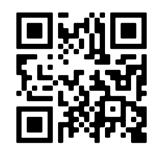
A new project led by anthropologist Pascal Boyer will explore the origins and evolution of so-called “wild” religions — those that spread naturally among people without established doctrines. As opposed to institutionalized systems like Christianity and Islam, wild religions are built on cultural beliefs that arise from instinctual responses to a shared environment, and they often manifest in customs like divination, shamanism, and the appeasing of ancestral spirits.
Boyer hopes that a main takeaway of this project, which is funded by a $2 million grant from the Templeton Religion Trust, will be the destigmatization of folk traditions.
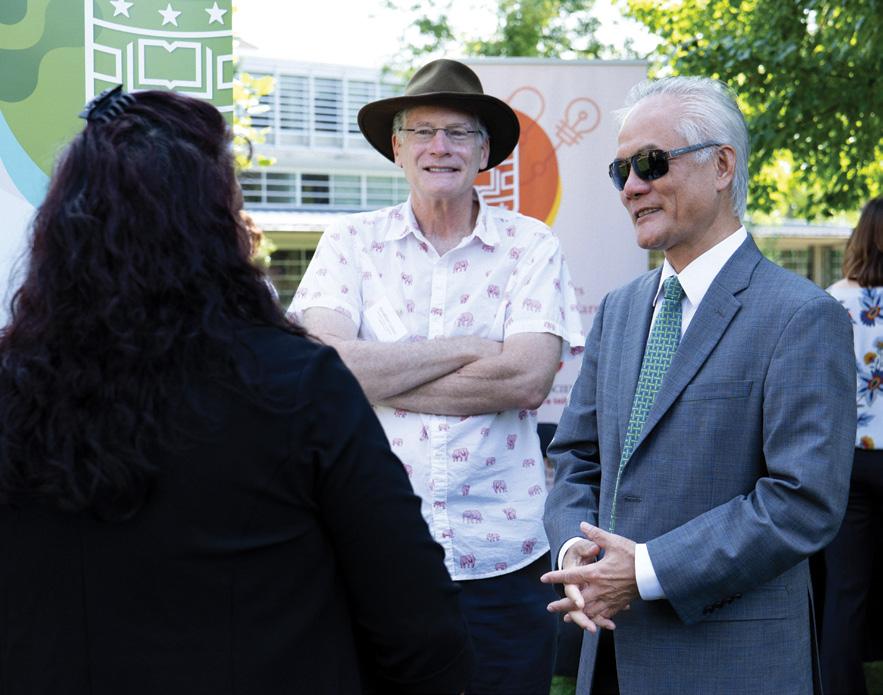
The British Academy’s Sir Israel Gollancz Prize typically recognizes a single significant work related to early English language and literature. This year, the academy made an exception and granted the prize to David Lawton, professor emeritus of English, in recognition of his lifetime contributions to the field of Middle English studies. Lawton’s many works include a history of the Bible in English and a book on the rhetoric of blasphemy. Another scholar of literature and religion, Abram Van Engen, was also honored this fall. Van Engen won Yale University Press’s biennial Pelikan Award for his book City on a Hill: A History of American Exceptionalism.
Physicists Erik Henriksen and Kater Murch each received a $1.25 million grant from the Gordon and Betty Moore Foundation, which aims to create positive outcomes for future generations by fostering pathbreaking scientific discovery. Henriksen’s award supports investigation of the physics of quantum spin liquids in devices based on atomically thin materials. Murch will be developing a long-lived quantum memory based on spinstates of single electrons trapped in vacuum above solid neon in a cryogenic environment, providing new approaches to quantum error correction and quantum computing, advancing applications in quantum sensing, and enabling new tests of fundamental physics.
For over a century, cancer cell metabolism has been viewed as something of a paradox. Cancer cells consume glucose at an astounding pace, but they don’t use it very efficiently, releasing most of it as a waste material. Chemist Gary Patti recently showed that this might not be such an anomaly after all. According to Patti, cancer cells follow the same biochemical pathways as other cells, but they can’t transport the glucose as fast as they consume it.
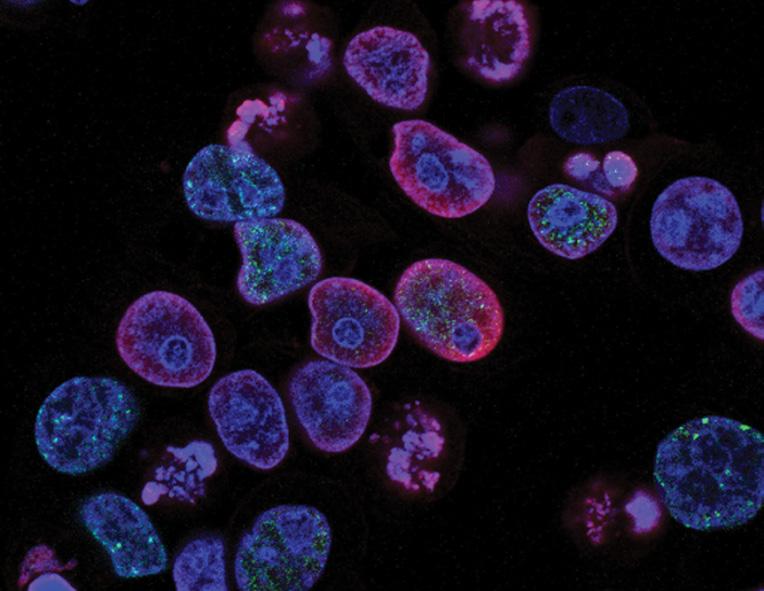
The longest running training program funded by the National Institute on Aging will continue supporting graduate and postdoctoral students, thanks to a $2.5 million renewal grant recently awarded to Jeff Zacks and Denise Head, codirectors of the department’s Aging and Development program. The nearly 50-yearold program stands out from other institutions’ due to its broad focus on both healthy development and the diseases of aging.

Following a nationwide search, Jennifer Heemstra took the helm of the Department of Chemistry in July. Heemstra is a highly regarded researcher whose work focuses on harnessing properties of nucleic acids for applications in biosensing and bioimaging. She has received numerous awards and honors, including a 2021 Rising Star Award from the American Chemical Society. As the new Charles Allen Thomas Professor of Chemistry and department chair, Heemstra envisions a future for chemistry at Washington University that is “all about people.”
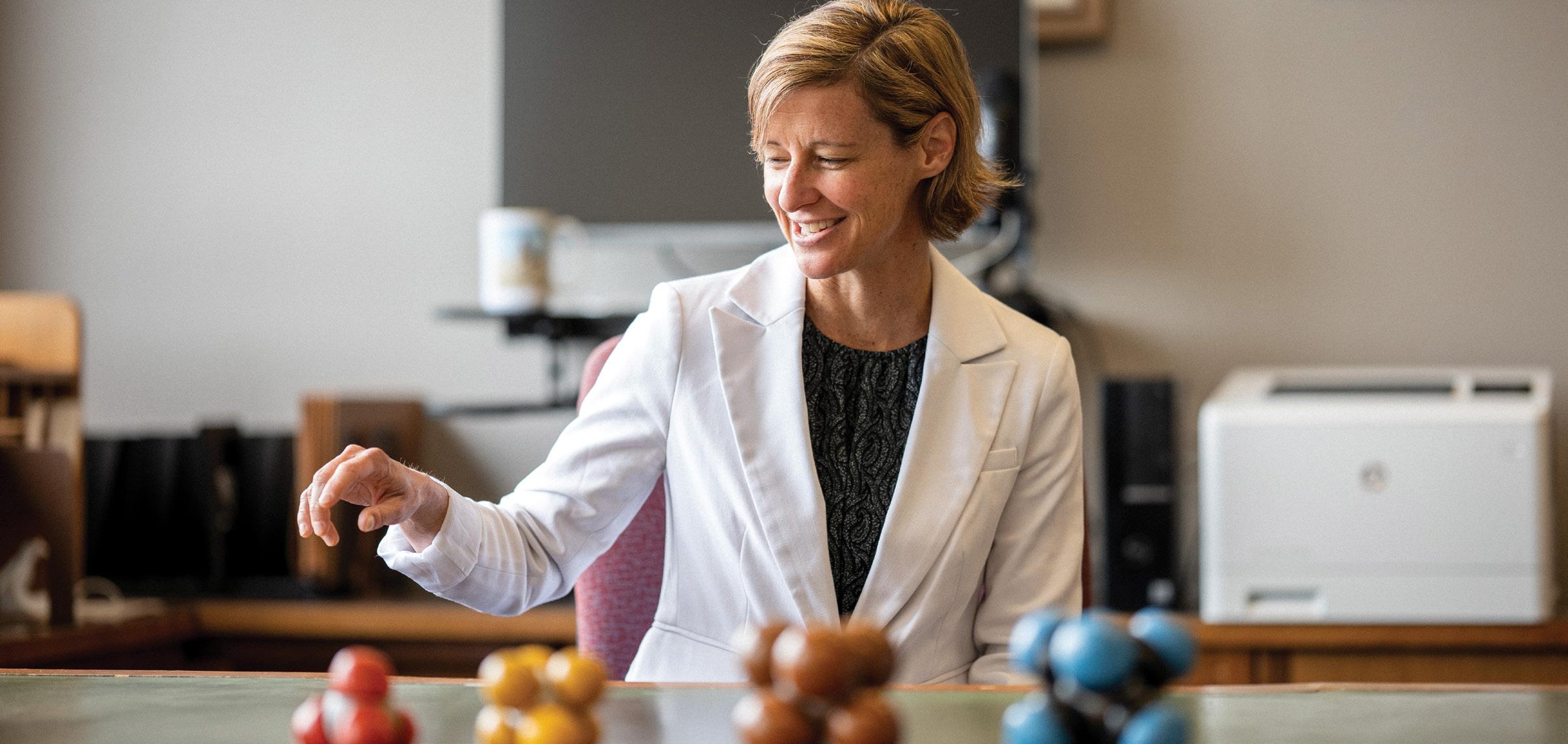
This is a department and a university that I’ve always held in extremely high regard. I was really excited when I first learned about the opportunity to move to WashU, but it was my interview that completely sold me on it.
I felt more energy here than I had in years because, as I looked around at the department and thought about what I would want to do as chair, I realized that the Arts & Sciences leadership and faculty wanted to see exactly the same things happen in the department that I did. My interview was basically two days of nonstop problem-solving and talking about what could be possible, thinking about how we could advance the department, and considering what new approaches we might try.
With the phenomenal faculty, staff, students, and postdocs we have here, it was just immediately apparent to me that
students to pursue new ideas, and developing collaborations between groups across the Danforth and medical campuses.
All of that is done through people.
I got into this job because I love chemistry and I love building things. As an undergraduate, I fell in love with a subfield called supramolecular chemistry, where we essentially build complex architectures at the molecular level. The idea of building with molecules is what drew me to a chemistry major, and what convinced me to go to graduate school, and what kept me going into a postdoc, and what made me want to become a faculty member.
Once I became a faculty member, I realized that, while I thought I had just a science job, I also have a people job. That was an immensely exciting thing to discover. My happiest moments are when I’m meeting with my lab members and we’re talking through a research problem or “blue sky”
amazing things could be achieved, and it is my privilege to now be here leading the department toward that vision. Every time I’m on campus, I feel a sense of excitement well up in me. It’s incredible.
My big vision is to create a place where everyone has the environment and resources they need to be their best. If every individual can walk into work each day and think, “Yes, I belong here, and I am supported and valued here. This place makes me want to be creative and driven and run after big goals and pursue excellence today,” then that is how we will all collectively advance. When you feel like you belong, it builds your confidence and it builds your energy, and then that fuels success.
We can achieve this by intentionally recruiting people who are outstanding educators and outstanding researchers and who care deeply about building an inclusive community and being kind and supportive to all of the people they work with. For example, when we recruit faculty, many people get focused solely on research achievements, but you realize as a leader that it’s the ability to work cohesively as a team that’s going to create true excellence. We have a great foundation for that here, and we can continue building on it.
It’s really all about people. Broadly, we want to keep being outstanding in undergraduate and graduate education and to continue building our research excellence by improving infrastructure, recruiting outstanding faculty, empowering
brainstorming about all the projects we’re going to do. I love seeing the ideas they generate, working through issues and finding solutions until, all of a sudden, we have this really cool idea that we’re all excited to pursue. That process is really what makes science fun for me.
Find great mentors. And realize that we never outgrow the need for mentoring. You don’t always have a choice in who your mentors will be because sometimes you’re just following where the opportunities lead you. But, to the extent that it’s up to you, choose to work with people who do great science and, even more importantly, who are going to support you and be rooting for your success and leveraging their power and privilege to help you advance your career. For graduate students in particular, a research project may last for a few years, but if you choose great mentors, then they’re going to be mentors for life.
We can tend to think that we are mentored early in our career and then we become mentors and no longer need mentoring from others. But that couldn’t be further from the truth. The more I’ve advanced in my career, the more I need my mentors, and that has become especially clear to me in the last few months as I’ve taken on this new leadership role. As the challenges I confront on a daily basis get more complex and the stakes get higher, the more I lean on mentors to share their wisdom and give me advice so that I can do my best for the people around me.
When you feel like you belong, it builds your confidence and it builds your energy, and then that fuels success.

Researchers in Arts & Sciences examine environmental injustice along waterways, shifting the current toward a more equitable future.
In late July, floodwaters surged through the St. Louis region, pouring into homes, businesses, and public transportation corridors. Images from the historic rainfall filled national news outlets in the following days, but the reports missed some crucial context.
“Everyone heard about the major flood that happened in St. Louis, but nobody knows about the constant flooding happening in Centreville, just 20 minutes away,” said Claire Masteller, assistant professor of Earth and planetary sciences. “That disparity is environmental injustice.”
From fires in the western United States to flooding in the Midwest to polluted lands and waterways across the globe, climate-driven crises and neglected environmental hazards often exacerbate existing inequalities as lower-resourced areas and communities of color face the brunt of these threats.
Recognizing this reality, a large and growing number of Arts & Sciences faculty members across the humanities, natural sciences, and social sciences identify environmental justice as a critical goal of their work. Four of these researchers discuss how they’re diving in.
Masteller, a geomorphologist, is working with communities in the St. Louis metro area to ascertain what risks they face as the local landscape evolves, particularly when it comes to moving water. In a NASA-funded community study, Masteller will be modeling urban flooding in Centreville, Illinois, integrating satellite data with flood data gathered by community partners.
“Centreville isn’t unique in the sense that it experiences
communities in the state of Illinois, and they experience severe flooding after only 30 minutes of rain. Even when you account for the natural risks that come from living in a floodplain, it’s clear that the management and engineering decisions in Centreville have not been sufficient to handle the staggering amount of water piling up on this landscape.”
As a geomorphologist, Masteller is an expert on landscapes. Her research focuses on how landscapes form and change. She aims to better understand why Earth’s surface looks the way it does, how it might respond to future changes in weather and climate, and, critically, how landscape dynamics impact people living in those areas. In ongoing collaborative research funded by the National Science Foundation, Masteller combines experimental studies of river erosion in her lab with historical flood data and geospatial data from real river channels to quantify how sensitive rivers are to changes in climate.
“Our landscapes are the place where climate change is ultimately going to be brought to bear, and where it’s going to affect human lives,” Masteller said. “The people who live on these landscapes will have to endure the consequences of those changes.”
Climate change has obvious implications for environmental justice, she says: Not all communities will be impacted by the consequences of climate change equally, nor will affected communities receive equal support from governments.
For Centreville residents, the consequences of ongoing flooding spill over into social, economic, and health issues. Floodwaters back up sewer systems, limiting access to clean drinking water; repeated water damage to homes can be costly to repair and can reduce property valuations, making it nearly impossible for residents to sell their homes and relocate.
Masteller plans to deliver findings from her Centreville project to local project partners with the aim of defining flood risk more accurately, providing evidence for infrastructure improvements needed to reduce flooding, and, ultimately, helping to secure a more equitable future for the community.
In her lab, Claire Masteller uses a flume to study the erosion patterns of gravel bed rivers. By changing the water flow, incline, and gravel distribution, Masteller can model rivers big and small, from the mighty Mississippi to modest mountain streams.
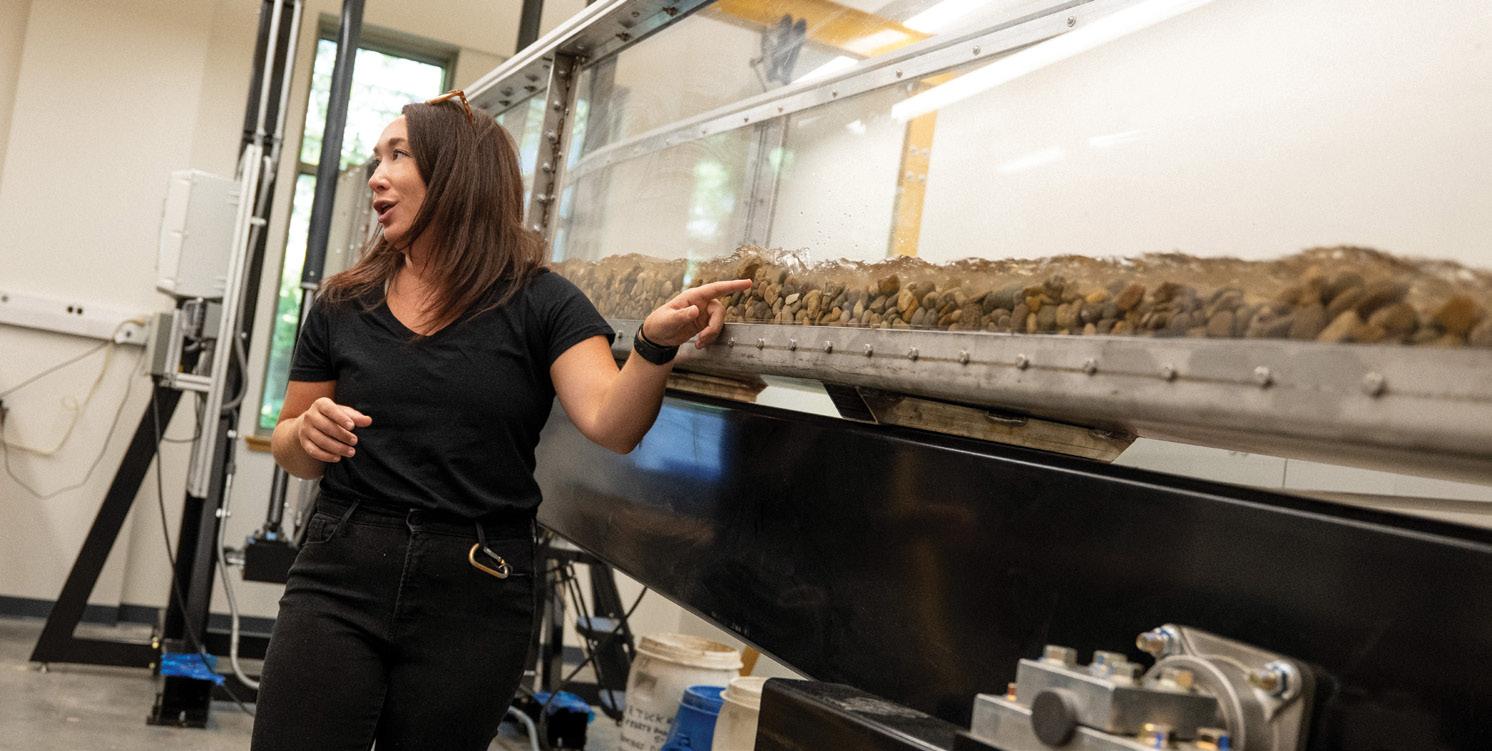 (Photo: Sean Garcia)
(Photo: Sean Garcia)
Ecological art, a genre fueled in part by environmental disasters, can elicit a reaction that art historians call the “toxic sublime” — an uncomfortable pleasure provoked by looking at gorgeous large-scale landscape photographs of heavily polluted sites. These photographs frequently depict harsh environments as both starkly beautiful and hazardous.
People — particularly those who live near these wastelands — are notably absent from these photographs, says Ila Sheren, associate professor of art history and archaeology. Sheren is writing a book about digital art that flips that template by placing people at the center of depictions of ecological disaster.
“Because of the way that the global art market works, when we look at artwork that’s dealing with the Global South, these artists are often making art not for local audiences but for people living half a world away,” Sheren said.
In her art history courses at WashU, Sheren regularly shows students the 2015 short video Manthan by artist Vibha Galhotra. Her students often express mystification at the video’s emphasis on the ritual pollution of a white sheet, which is dipped in the Yamuna River in India and covered in black sludge by the video’s end.
Manthan serves as a powerful teaching tool because it reveals an alternative to the “toxic sublime.” Galhotra made the film for both local and international audiences, and the artist does not depict the Yamuna as a polluted site devoid of people. Instead, she “communicates in the language of that place” by placing local knowledge and bodies at the center of her narrative.


Manthan shows four men driving rafts in the Yamuna River to a floating mound of trash and debris. Their actions reference
the Samudra Manthan episode in Hindu mythology, in which gods and demons briefly join together to churn an ocean and create the nectar of immortality. As a byproduct, they pollute the ocean with a poison that threatens to destroy all of existence. Another god, Shiva, swallows the poison to prevent the destruction.
“I’m really intrigued by the idea of the kinds of messages that these artists are creating and which audiences they privilege in their art,” Sheren said. “That question reveals a lot about how art engages with larger discussions about human inequality and environmental justice.”
Photographs of ecological wastelands often juxtapose the alien beauty of the environment with its status as a site of environmental catastrophe. (Photo: Ila Sheren) On recent trips to India, Ila Sheren photographed rivers like the one depicted in Galhotra’s video. (Photo: Ila Sheren)These artists are often making art not for local audiences but for people living half a world away.
Nobody wants to talk about parasites. Compared with other types of disease, even the medical scientific community within the U.S. has largely ignored parasitic infections for decades. But Theresa Gildner, assistant professor of anthropology, and her collaborators are paddling upstream against that trend.
Gildner studies parasites that spread when contaminated water or soil brings fecal matter into contact with humans; this contamination often occurs in lower-income neighborhoods, which experience frequent flooding and associated sewer backups.

“There seems to be a general lack of awareness in many parts of the country that this is even a concern,” said Gildner, “because the infections tend to largely impact less affluent communities that don’t have resources to draw attention to these issues in the first place.”
When Gildner tested samples from schoolchildren in Mississippi, she found that 25% of the classroom had signs of parasitic infection, and a startling 80% had clinically elevated intestinal inflammation — a higher rate than her earlier studies found in Ecuador and other parts of the world. She’s now investigating whether the same issues affect neighborhoods with wastewater management concerns close to Washington University. In collaboration with community partners and with support from a newly launched seed grant program in Arts & Sciences called SPEED (Seeding Projects for Enabling Excellence & Distinction), Gildner began data collection in the Metro East this summer. The grant provides resources to conduct sophisticated lab analyses of soil and fecal matter; in collaboration with Liz Mallott, assistant professor of biology, she will examine the samples for parasite DNA. The grant also provides increased opportunities for community outreach. In Mississippi, Gildner hired nurse practitioners to build a database for study participants that will track incidents of parasitic infection and provide information and resources for medical treatment.
This summer in the Metro East, discolored standing water remained for days after torrential rain, leading to the death of crops that were exposed to the water. (Photo: Theresa Gildner)In a course titled “Black Geographies,” led by Robin McDowell, assistant professor of African and African-American studies, students are guided through key sites chronicling environmental injustice along the Mississippi River. Pictured from left to right are undergraduates Jordan Lee, Tori Harwell, and Matthew Friedman and graduate student Rebecca Dudley.

Gildner views her work detecting parasites as part of a larger push for environmental justice and more equitable health outcomes. “If you’re in a community where you’re exposed to these conditions that can contribute to poor health over time, that might impact your performance in school or lead to difficulty being able to gain more economic mobility and opportunities,” said Gildner.
“It’s a vicious cycle. Because the parasites are in the environment, even if you’re treated once you might be continually reinfected, and this might contribute to existing health and wealth inequities,” she said. “There are serious financial costs and long-term physical consequences if you’re not making structural changes to try to prevent people from being exposed in the first place.”
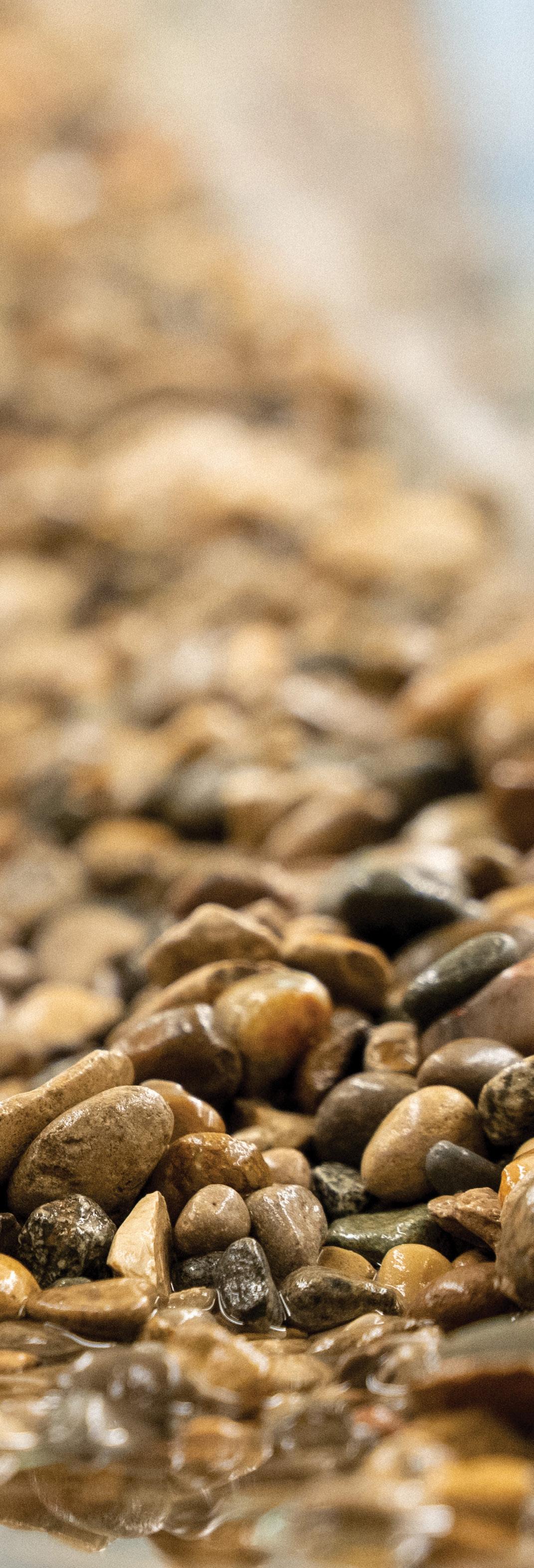
They knew they were getting close when they saw the bubbles. Shortly after came the smell. As six students, led by Robin McDowell, assistant professor of African and African-American studies, raised and dipped wooden paddles into the Mississippi River, they slowly approached the Mary Meachum Freedom Crossing. The students had read about Mary Meachum’s attempt in 1855, beginning at this location, to ferry nine enslaved people across the Mississippi to freedom in Illinois. But seeing the site in person — totally inaccessible except from the river and marked by industrial waste pouring into the water — raised some perplexing questions.
“It gets to the historical roots of environmental racism,” said McDowell. “We can track contaminants in the water, but how do you measure historical desecration? What does it mean when you are continuously disrespecting what is really a sacred piece of Black history, the history of the city, and the history of the United States?”
McDowell planned the Mississippi River canoe trip, which began in north St. Louis and ended at the St. Louis Arch, as the culmination of her advanced seminar “Black Geographies: Space, Place, and Ecologies of Power.” In the course and in her own research, McDowell views the Mississippi as a powerful vantage point from which to examine the ways that historical and contemporary patterns of industry and toxicity affect Black and lowerincome communities. Her current book project focuses on the long history of environmental injustice in southern Louisiana, a site that shares St. Louis’s ties to the Mississippi.
In “Black Geographies,” McDowell offers an interdisciplinary approach to the study of environmental justice. The course invites students to plan their own lectures and field trips to historic sites, and they hear from current-day community organizers alongside discussions of historical events. The method, McDowell says, acknowledges that “the history of the bonds between race and environment” can’t be adequately approached through any single, neatly defined subject area.
“How do universities prepare young people for a world in crisis?” McDowell asked. “I’d like to think it’s through these interdisciplinary and experiential courses, where students become politically, socially, and economically knowledgeable. We’re fundamentally preparing people for the world they inhabit.”
Kibale National Park in Uganda serves as a haven for many animal species, leading to some unwelcome interactions between animals and farmers who live nearby. To reduce instances of wild animals eating or damaging crops, Busobozi Richard, Moses Kugonza (left), and Krista Milich, assistant professor of biological anthropology, teamed up to form Conservation to Coexist, a community-driven research project. Using methods like trenches and bee hives, team members including Kugonza and assistant Ronald Akugizibwe (right) help the park’s animals peacefully coexist with their neighbors. Kugonza also works with Milich on a separate long-term project studying red colobus monkeys.
 (Photo: Thomas Malkowicz)
(Photo: Thomas Malkowicz)

1
for leadership, public service, and commitment to issues related to Native American nations or to the environment
2 Recognizes exceptional juniors committed to careers in public service
Ranen Miao, a senior studying political science and sociology, has received quite a bit of attention recently, and for good reason. In only three years, Miao has been named a Udall Undergraduate Scholar 1 , awarded a Truman Scholarship 2 , and much more 3 . Behind all the accolades is genuine intellectual curiosity and an eagerness to discuss a core experience in his undergraduate career: research.
3 Such as: Point Foundation Scholar, Prism Foundation Scholar, and Gephardt Institute Goldman Fellow

6 Projects on maternal mortality and food insecurity, the relationship between SNAP benefits and evictions, and more
4 Sociologist and award-winning author Adia Harvey Wingfield, the Mary Tileston Hemenway Professor of Arts & Sciences and vice dean of faculty development and diversity
I’ve always wanted to be involved with research because I’ve seen it as a way to deepen my understanding of the world around me. The advice I got from a mentor during my first year was that I should just reach out to professors whom I admired and ask if they need help. That’s why, after class one day, I asked Professor Wingfield4 if there was research I could assist her with. I helped her find information for the book she was working on at the time, which was super exciting and allowed me to dip my toes into the water of research.
Now, as a senior, I’m doing independent research as a Kling Fellow5, working on multiple projects6 with the Social Policy Institute, and writing two theses — one in sociology and one in political science — which will allow me to spearhead two major papers for the first time in my academic journey. On my own projects, I’ve had the opportunity to design research questions and methodologies, which has given me additional experiences in quantitative and qualitative scholarship to supplement my work as a research assistant.
Each project teaches me something new about the world, but my broadest takeaway is that the data doesn’t always align with your expectations, so it’s important to understand how to conduct research and read research in order to better understand the world around us. Leading my own projects has shown me how tedious the
5 Miao’s project through the Merle Kling Undergraduate Honors Fellowship, offered through the Center for the Humanities, focuses on how queer people of color engage in race-based sexual discrimination
8 Did we mention his a cappella group, Sensasians, and that he’s the A Cappella Advisory Council president this year?
research process is, but it also makes me excited to pursue graduate education7 to continue exploring similar questions. Being a researcher will allow me to be a more thoughtful, data-driven public servant, somebody who can lead not just through passion and empathy but also with competence and knowledge.
I have so much planned8 for this year! Some highlights are serving as the new chair for the Missouri College Democrats, where I will work with state party officials and statewide College Democrats chapters on the midterm elections, and attending conferences such as COP27, to represent WashU on a global stage discussing climate policy.
In terms of advocacy, I am excited to continue working with Student Union9 on protecting and expanding mental health resources, support for low-income students, and access to abortion and other forms of reproductive care. Since my first year, my curiosities haven’t changed as much as they’ve evolved with additional nuance. Living through a pandemic and working in multiple legislative and legal contexts10 has helped me refine my passion for finding effective policy solutions — questions which I plan to continue exploring as a senior as I take classes in new departments11
I hadn’t previously explored.
10 In internships for U.S. Rep. Jamaal Bowman of New York and the U.S. State Department, for example
7 Law school is on the table the Truman Scholarship offers up to $30,000 in support
9 Miao has been elected Student Union president twice!
11 Environmental studies and economics
Being a researcher will allow me to be a more thoughtful, data-driven public servant.
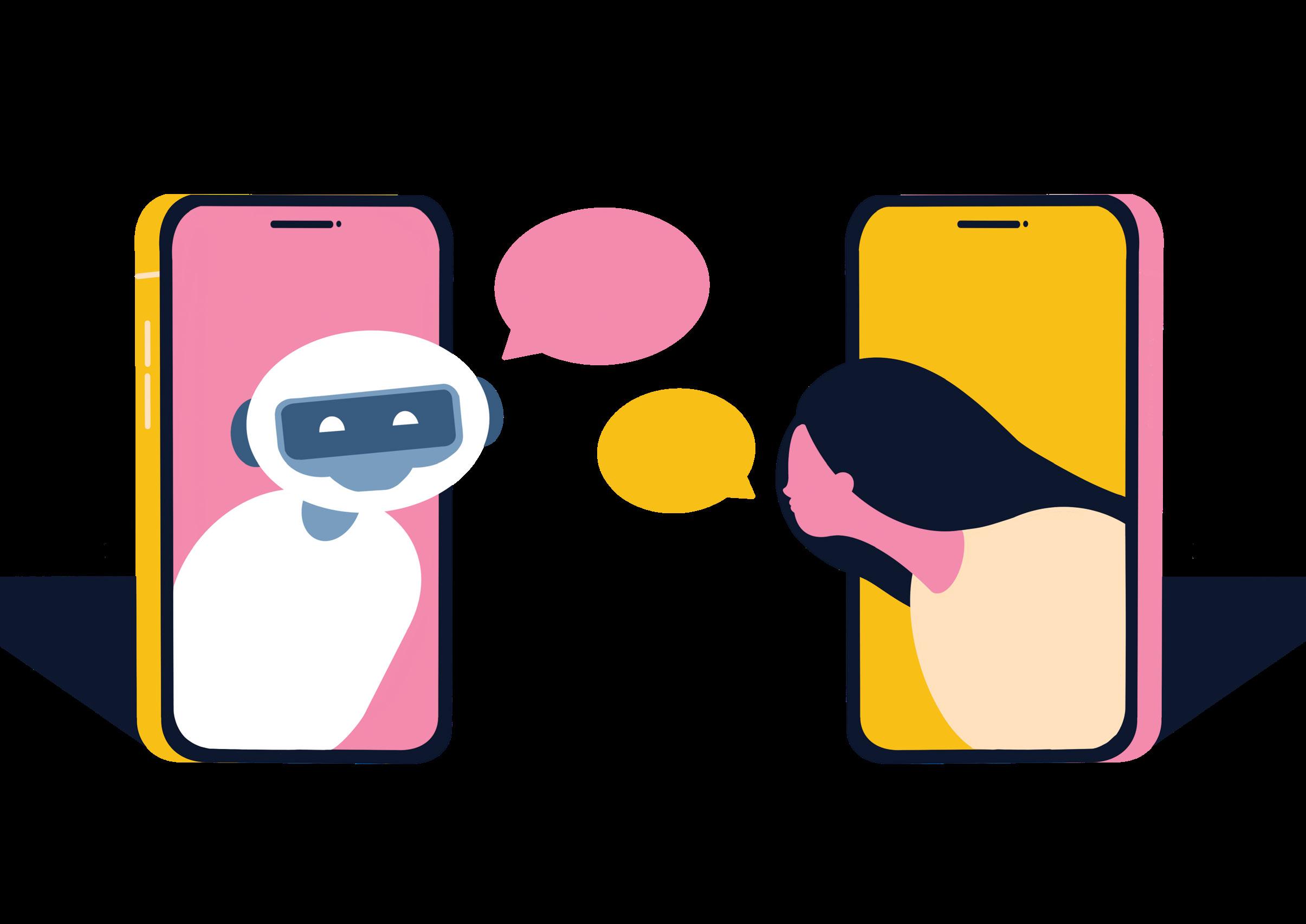 STORY BY SHAWN BALLARD
STORY BY SHAWN BALLARD
The use of social media bots to influence politics made splashy headlines around the 2016 election, but just how pervasive are these bots? Is your Twitter feed secretly full of bot activity rather than the meaningful human interaction that drew many to social platforms in the first place? The short answer is yes, say Soumendra Lahiri, the Stanley A. Sawyer Professor in Mathematics and Statistics, and Dhrubajyoti Ghosh, a doctoral student working with Lahiri: There are a lot more bots on Twitter than you might think.
The abundance of fake accounts — famously cited by Elon Musk as an obstacle to his acquisition of Twitter — intrudes upon the free exchange of ideas on social media, particularly when users can’t tell whether they’re talking to other organic users or manipulative bots deployed as part of targeted influence campaigns.
“Initially, with the rise of social media, there was a lot of panic and paranoia about how the internet was going to take over our ability to make rational decisions,” said Betsy Sinclair, professor of political science and author of The Social Citizen: Peer Networks and Political Behavior. “But that assumes you can catch politics from anyone, and that’s just not how it works.”
According to Sinclair, bots may not be very effective at influencing your political position or changing your vote, simply because bots aren’t your real friends, regardless of your connection on social media. “Unlike the coronavirus, politics is really only contagious from people that you’re likely to share a glass of water with,” Sinclair said.
However, danger still may lurk in bots’ ability to spread misinformation through unwary amplifiers. To resist these
“To put it plainly, Twitter is being misused. It’s a publicly open forum, but some influential people take advantage of the openness of Twitter to try to advance their own agenda,” Lahiri said. “What we are seeing is that, depending on the issue, many non-human machines or programs participate in these conversations and oftentimes try to lead the discussion in a way that suits whoever is funding those bots.”
To understand the scope of this problem, Lahiri and Ghosh developed an algorithm to distinguish human from nonhuman users. Twitter has publicly claimed that the total number of false or spam accounts is a mere 5% of daily users, but Lahiri and Ghosh beg to differ. Their results suggest that bots account for the majority of Twitter users. This veritable army of bots is being deployed in an attempt to influence social media users on a wide range of topics, but politics remains the most salient case, both at the level of individual political campaigns as well as adversarial nations portraying each other negatively.
attacks, savvy users must evaluate which posts are coming from humans as opposed to those coming from machines. Using data science and statistical methods, Ghosh and Lahiri were able to accurately classify accounts as organic or inorganic — that is, human or bot — based on their Twitter activity.
“If you look at the pattern of timestamps on tweets, you can differentiate organic users, basically just how you’d expect,” Lahiri said. “Organic users have their own daily lifestyle, so you see them tweeting during the hour after they get off work or during their lunch break. That’s one pattern of timestamps.”
“Bot behavior looks completely different under time series analysis,” Ghosh added. Because bots don’t sleep or have any other daily obligations, they display a very different pattern of behavior.
To put it plainly, Twitter is being misused.
Ghosh and Lahiri identified tweet content as another important indicator that a user might be a robot masquerading as a person. Looking at how many distinct words appear in a user’s tweets can unmask bots, which tend to have limited and often-repeated vocabularies. Humans, on the other hand, tend to use about 10 times more unique words than bots in their tweets.
“Even a cleverly designed program does not have the same breadth of vocabulary words and expressions as humans do,” Lahiri explained.
“Somebody programmed those bots, and whatever they put in, that’s what gets used repeatedly.”
Beyond what they say and when they say it, bots have yet another tell: whom they’re connected to. Twitter serves up content based on many factors, including how many followers a user has and how much they use the platform. According to Lahiri and Ghosh, inorganic users typically have many more followers than organic users. The creator, or general, of a bot army may get a boost in Twitter’s algorithm by spreading their content on a highly connected network, but they also give themselves away by having all their bots follow each other.
Taking these features together, Ghosh and Lahiri’s algorithm was able to identify inorganic users with up to 98% accuracy. Though their dataset was limited to about two million tweets collected over a six-week period — Twitter is unsurprisingly extremely protective of its data — the researchers are confident that their publicly available sample is a fair representation of what’s actually on Twitter. And, unfortunately for organic users, what’s actually out there is mostly bots.
Ghosh and Lahiri found that bots account for 25–68% of Twitter users, depending on the time and issues being discussed, a staggering figure for anyone who views — or is trying to sell — social media as a source for human connection.
Though social media companies could use Ghosh and Lahiri’s findings to combat bot armies, this isn’t a war that can be fought only once. As soon as inorganic users are reliably identified, programmers are hard at work on the next generation of more sophisticated bots, making them look more like organic users and necessitating even better methods of detection.

“It’s a cat and mouse game,” Lahiri said. “As creators change their programs, we have to look for other features we can use to find them.”
One such avenue for future research lies in the dynamics of bot networks, particularly how neighborhoods of inorganic users grow over time. Bot armies are already showing surprisingly advanced configurations, with central influencers surrounded by fringe users, indicating they’re evolving under the leadership of increasingly devious and sophisticated generals.
But don’t batten down the hatches and delete your social media accounts just yet. There may be some positive outcomes, even from negative or inauthentic online discourse.
“We do see people engaging with each other on social media in some meaningful ways, such as genuine deliberation or debate; it’s not all just vitriol and unpleasant comment sections,” said Sinclair. “It’s also important to remember that weak social ties — people who pop up in your feed now and again, someone who lives across the country who you don’t see regularly, anyone you don’t know very well — they really don’t influence you. Your strong friends who regularly like and comment on your posts and actually appear with you in pictures, they’re your true influencers.”
The bot armies may be vast, but populist rhetoric could pose a bigger threat to democracy
Political scientists Jacob Montgomery, Margit Tavits, and Christopher Lucas recently won funding from the National Science Foundation to study the rise of populist rhetoric on social media and its effects on democracies.

Responding to concerns over the rise of populism and its potential threat to global democratic stability, Montgomery, Tavits, and Lucas will produce a massive new dataset capturing the extent of populism in communications by political elites. By scraping social media data from tens of thousands of candidates and hundreds of parties across nearly 80 countries, the team aims to advance political scientists’ understanding of the spread and consequences of populism in democracies around the world.
“We’re in a moment where a lot of political communication is happening on only a few social media platforms, and, thanks to recent transparency initiatives by companies like Meta and Twitter, we’re able to gather content from public pages to see what candidates are saying to constituents around the world,” said Montgomery, associate professor of political science and director of the Transdisciplinary Institute in Applied Data
Sciences (TRIADS). “We can capture these data over time, which gives us a much richer, more dynamic dataset that we can leverage to study political competition not just at a party level but also at a candidate level.”
That dataset will allow Montgomery, Tavits, and Lucas to answer important questions: How widespread is populism globally? Which types of candidates and parties are more likely to adopt it and when? Is populism contagious? How do voters respond to the use of populist rhetoric by politicians? Is this rhetoric more likely to incite extreme emotional responses? Their ultimate goal is to understand how populism affects political competition both in terms of voter behavior and party politics.
 STORY BY CLAIRE GAUEN
STORY BY CLAIRE GAUEN
Alumni from the Department of Psychological & Brain Sciences are leading the way toward accessible mental health care for all.
When Myra Altman, PhD ’17, transitioned from clinical psychology to the tech world, joining what was then a five-person, San Francisco-based start-up called Modern Health, she decided to conduct a small experiment. Altman called 50 mental health providers listed through her insurance plan to make an appointment. Just two called back. Both informed her that they had no openings for new patients.
“I wanted to get my head around the magnitude of the problem,” Altman recalled. “I thought that since I’m a psychologist and I know the space pretty well, it shouldn’t be that hard for me to find support. Had I been experiencing severe depression, I’m not making those 50 calls in the first place.”
Four years later, Modern Health provides one-to-one, group, and digital mental health services to companies and their employees around the globe. Altman serves as vice president of clinical strategy and research.
The rapid expansion of Modern Health illustrates the high demand for mental health support, especially digital health interventions, or DHIs, geared toward mental health. Such solutions hold promise for reaching wide swaths of people across age ranges and geographic locations who might not have easy access to care. They also offer ways to ease the burden of overworked psychologists by providing those with less acute mental health needs additional options for support. However, challenges abound in developing these tools and making sure that high-quality, evidence-based DHIs reach the many people who might benefit.
On the path toward greater mental health through digital tools, Arts & Sciences alumni are leading the way.
As a project coordinator for the Lab for Scalable Mental Health at Stony Brook University, Arielle Smith, AB ’22, considers DHIs a powerful way to bring mental health care to teens and young people, in particular.
While still an undergraduate, Smith helped develop a chatbot for eating disorder prevention that is now available through the National Eating Disorders Association. She also published research on how notifications and other factors impact young peoples’ engagement with mental health apps.

Despite nearly ubiquitous smartphone usage among young people, reaching this group still presents a challenge. Even when young people discover effective self-help tools, users frequently drop off before finishing a digital program designed to be used over multiple sessions or over an extended length of time. Smith’s current work considers an alternative approach.
“A different perspective is thinking, what if we don’t have this many sessions to begin with? What if we lower the intensity of the intervention and focus on effects that can occur in a shorter amount of time?” she asks.
Smith now provides support for Stony Brook researcher Jessica Schleider, who develops single-session interventions, or SSIs, geared toward teens with depression. These interventions transmit evidence-based information, using proven strategies like saying-is-believing exercises, in a single session that can be completed in around 30 minutes — a great option for those who might seek help on the spur of the moment but not want to commit to an extended program. Smith came to this work through her own struggles with depression as a young teen. Despite having a supportive family environment, she says that it took courage to approach her parents to ask for professional help at age 14.
“Had I not been able to get that support, I think my life would look a lot different right now,” said Smith. “And I know that I’m in that very privileged position. Many teens don’t feel like they can reach out to their parents, so putting things out there that they can access themselves, that’s huge — especially for prevention, so that people don’t have to get to the point where they’re struggling so much and unable to function. These digital mental health platforms are filling a huge gap in our mental health system.”
Denise Wilfley, professor of psychological and brain sciences in Arts & Sciences and psychiatry, medicine, and pediatrics at the School of Medicine, directs the Center for Healthy Weight and Wellness at Washington University in St. Louis. Several of Wilfley’s former students have become pioneers in creating and disseminating digital health interventions, or DHIs, geared toward mental health. (Photo: Sean Garcia)Digital mental health interventions exist in a variety of forms. Standalone apps, online self-help tools, websites, chatbots, and text-messaging services all fall under the rubric. Some companies, like Modern Health, offer virtual one-on-one appointments with a coach or therapist alongside digital tools and group-based support. All DHIs promise scalability: the potential to reach more people in need than possible through in-person care alone.
Andrea Kass Graham, AB ’07, PhD ’15, thinks a lot about scalability. As an assistant professor at Northwestern University and part of the university’s Center for Behavioral Intervention Technologies, Graham specializes in implementation science, or the study of how to best disseminate research findings into everyday life. She credits her focus in this area to her training at WashU, where she received undergraduate degrees in psychology and English before returning for her doctorate.
“My tagline is that I really think about how we create access to scalable mental health care. I’m passionate about reach,” she said. “Products that are developed in research have a harder time getting to market, and I think a lot about those challenges.”
At Northwestern, Graham leads an online program focused on binge eating and weight management. A separate project considers how physicians might most effectively guide patients in a rural setting to a depression and anxiety app. Another line of research examines how collaborative design and university-industry partnerships could make evidencebased mental health apps more engaging and, thus, more
— let’s say bachelor’s-level individuals who have training, but they’re not specialists with a clinical license — are equally effective in delivering these tools,” she said. “It allows for more coaches and more diversity among providers, which is important.”
Juliette McClendon, PhD ’18, views DHIs as a critical opportunity to scale up mental health care in an equitable way. At Washington University, McClendon researched the relationship between mental health and racial equity. She now serves as director of medical affairs at Big Health, a company that offers online therapeutics through apps like Sleepio, which helps people struggling with insomnia, and Daylight, an app for anxiety sufferers.
In 2020, when COVID-19 forced mental health clinics to shut down in-person operations, receiving care suddenly required a stable internet connection and privacy for extended virtual therapy sessions. For many people experiencing poverty, McClendon notes, these new hurdles only added to the long list of impediments to receiving care. Big Health’s apps are less resource-intensive, an important consideration when scaling up in an equitable way.
Mental health experts are accustomed to some pushback when it comes to DHIs, encountering questions like, “How is it possible to maintain quality as you scale?” and “Shouldn’t everyone have access to ‘real’ therapy?”
“I love and share some of the skepticism,” said Altman. “From my perspective, I want people to be asking those questions, because I think it forces those of us who are doing the work in
likely to be broadly adopted even when pitted against thousands of less effective tools available online.
Yet another means to achieve scalability, the one pursued by Modern Health, is to set up DHIs as an employer-provided health benefit. Modern Health provides participants with different types of care depending on the person’s mental health needs — one-on-one meetings with a therapist or coach, facilitated group discussions led by a provider, or selfguided online materials. The tiered and personalized format allows clinicians to be paired with those in significant need, while those with less acute mental health needs receive the right level and modality of care for them based on both their needs and preferences.
Graham, the researcher at Northwestern, sees great promise in this approach. “Data suggests that paraprofessional coaches
the tech companies to do much better.” At the same time, she recognizes that “the status quo isn’t working” — and not only due to a provider shortage.
In Modern Health’s onboarding screening, only 44% of participants select one-on-one as their first choice for how to receive care. This data suggests that even if enough therapists suddenly became available, not everyone would want that option. For those who do choose to connect to a therapist through private insurance or on their own, the quality of care varies widely.
“When I work in private practice, nobody is checking up on how my patients are doing,” Altman said. “As an individual practitioner — depending on my training, my background, my priorities, I do whatever quality assurance I think is best. So maybe I’m doing a lot of outcome measurement. Maybe
How do we create engagement that’s not just the number of clicks?
I’m not. Maybe I’m using evidence-based principles. Maybe I’m not.”
In contrast, DHIs allow for more regular and thorough surveying and outcome testing, as well as screening of therapists to become part of a network. Apps themselves also track engagement, and implementation scientists like Graham are actively working toward how to best use that data in a mental health context.
“How do we create engagement that’s not just the number of clicks, but that actually creates an experience for the user that’s helpful, beneficial, and satisfying? We’re really challenging academic researchers who are developing these tools to understand those components,” Graham said.
Altman, Graham, McClendon, and Smith share more than a commitment to scalable DHIs. All four earned degrees from the Department of Psychological & Brain Sciences in Arts & Sciences, and all worked with Denise Wilfley, the Scott Rudolph University Professor and director of the Center for Healthy Weight and Wellness.
“I’m so proud of these alumni and really thrilled to see them, from a humanitarian perspective, taking these sciencebased strategies and finding creative ways to bring them to populations who suffer and have great need,” said Wilfley.
“They’re the next generation. They’re doing phenomenal work. And I think they’re really poised to continue to solve the mental health crisis.”
Wilfley’s involvement in digital mental health solutions spans decades, from the days of CD-ROM in the 1990s to artificial intelligence and virtual reality today. She believes that progress in the field stems from “team-based science,” an approach she imparts on her students. Her lab regularly partners with industry, government, and scholars across WashU and other universities, and Wilfley’s students often join forces with WashU’s Brown School and the School of Medicine on dissemination and implementation research questions.
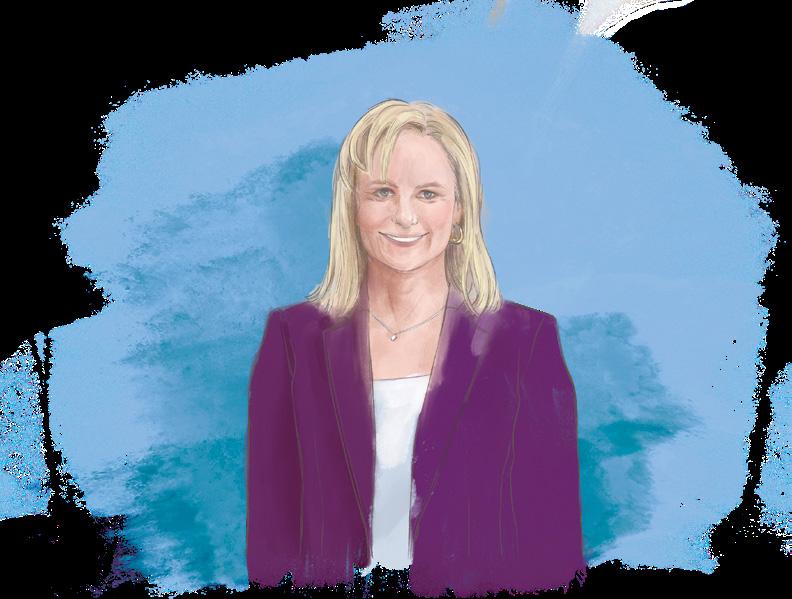


“The students that we get within the psychology department, whether it’s at the undergraduate or graduate level, are so bright, creative, and motivated. You pair that with this teambased science and a passion to get better access to care — I think that’s the formula for success,” said Wilfley.
Wilfley describes the alumni’s work in digital interventions as “revolutionary,” a label that, while taken as a compliment, bears some weight in the minds of her former students.

“It does really feel like we are on the forefront of something new. Because there’s often no playbook for what we’re doing,” said Altman. “How do you really think about providing robust crisis support for hundreds of thousands of people? It feels like you’re at the forefront, and it also feels like a huge responsibility.”

For 30 years, the Mellon Mays Undergraduate Fellowship program has supported undergraduate scholars and helped build diversity in academia.
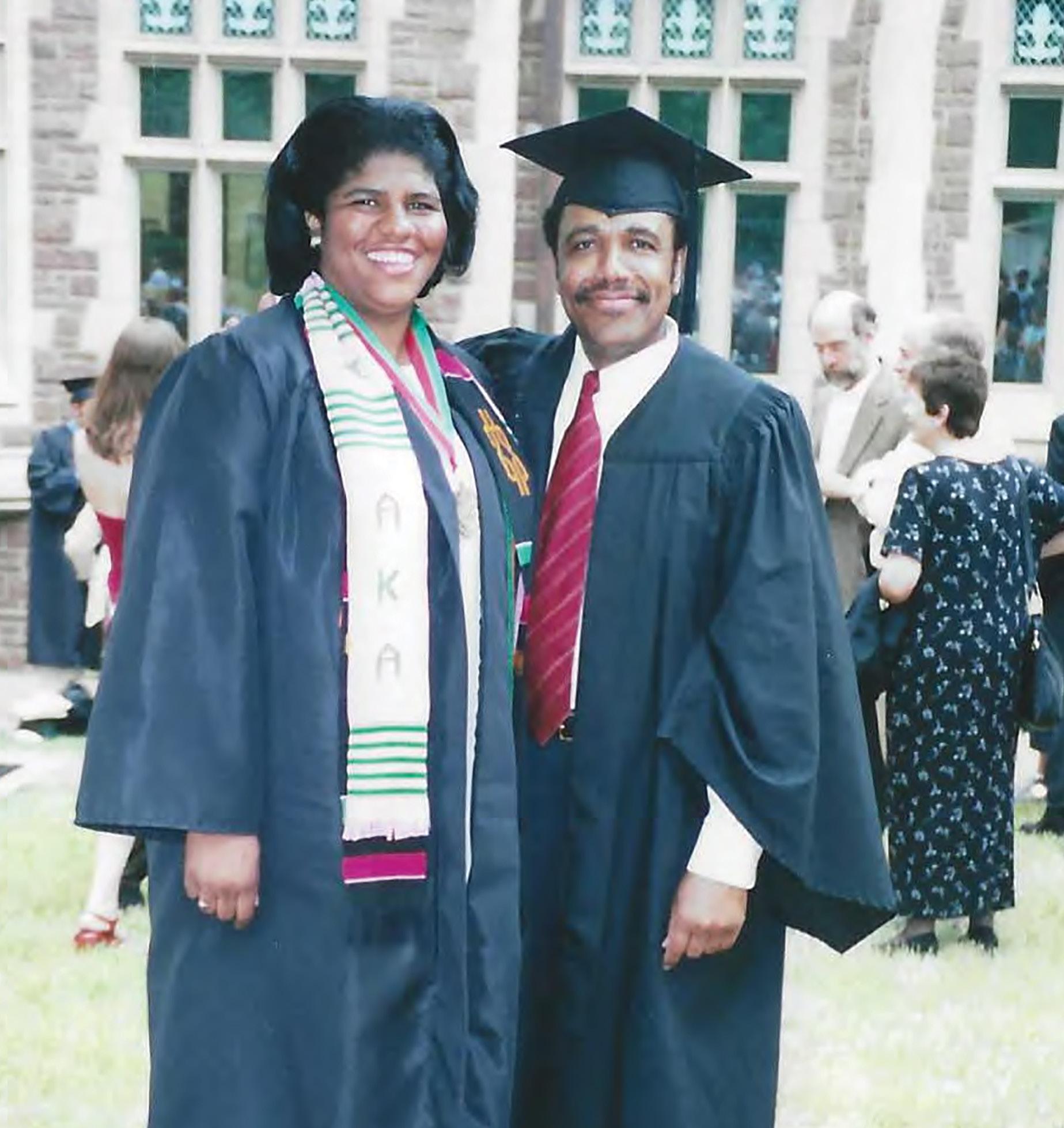
Reflecting on the 30th anniversary of the Mellon Mays Undergraduate Fellowship (MMUF) at Washington University, Michelle Purdy is proud of the community that helped her find her path in higher education.
“Because of Mellon Mays, you do not feel alone in what you’re trying to do,” said Purdy, associate professor of education and director of the undergraduate program in educational studies. “As a person of color, your very physical presence in an academic department pushes the status quo. We still have a way to go in supporting equity in higher education, but the tools you receive as a Mellon fellow equip you to take on that journey.”
“Now that Mellon program alumni from throughout the country have come to WashU as graduate students and faculty members, we definitely see how impactful this single program has been on faculty diversity here on our campus,” said Toliver-Diallo. “And we are quite boastful of how our WashU alumni are having an impact as graduate students, faculty members, and university administrators on campuses throughout the country and across the globe.”
Jonathan Fenderson, associate professor of African and African American studies, now directs the program, which welcomed a cohort of five new students earlier this year. Each student will work closely with a faculty mentor for two years

Purdy was a Mellon fellow as an undergraduate at WashU, and she later served as a teaching assistant for the Mellon seminar while earning a master’s degree in history. While in the Mellon Mays program, Purdy became interested in the history of Black education in the United States, and she now mentors students in the same program that fostered her academic interests as an undergraduate.
In 1993, the late Dean James McLeod led the effort to create a Mellon Mays program at WashU, joining a consortium of colleges and universities seeking to increase faculty diversity by funding student research in the humanities and social sciences. Since then, 159 students have participated, creating a rich network of alumni working in a variety of fields.
Wilmetta Toliver-Diallo, assistant dean in the College of Arts & Sciences and the MMUF program coordinator, estimates that 70% of the fellows have gone on to receive advanced degrees.
Purdy recalls how intellectually challenging the program was, noting that the weekly Mellon seminar — a unique hallmark of WashU’s program — gave her and her peers the courage to develop and defend their ideas.
“The faculty and staff at WashU poured themselves into us,” Purdy reflected. “It was a tremendous intellectual space where I learned how to process from not only faculty critique but also arguments from my peers. When I went to graduate school, I was not intimidated.”
Purdy’s former professors have since become colleagues, and she now mentors a Mellon Mays fellow. She is one of several Mellon alumni from WashU and other consortium institutions currently among the faculty in Arts & Sciences, a testament to the national program’s impact on diversity and equity in academia.
on an independent research project, becoming a part of the MMUF program’s legacy on campus.
“Thirty years is a tremendous milestone for WashU’s Mellon Mays program, and we are very fortunate to be able to show our students examples of Mellon’s success at various stages of the academic journey, from undergrad through tenure,” said Fenderson. “I’m excited to see how our newest cohort of fellows carries on the Mellon Mays tradition and also finds ways to be innovative and push the boundaries of the American academy — which looked remarkably different 30 years ago.”
The faculty and staff at WashU poured themselves into us. It was a tremendous intellectual space.Wilmetta Toliver-Diallo (top left) and Jonathan Fenderson (top right) serve as mentors to the 2022 Mellon Mays cohort, which includes undergraduates Maya Phelps, Lucas Veloria, Ad’mirel Durden, Annie Chang, and Tori Harwell (left to right). (Photo: Jerry Naunheim)
Jazz has always had a tradition of innovation and experimentation, but in the 1960s that began to change. The culture of jazz as community music that was heard in nightclubs until the early hours of the morning started to disappear as other modes of popular music like rock and soul rose in popularity. To stay employed, jazz musicians often had to perform more mainstream compositions. A collective of musicians on Chicago’s South Side took a different path.
The Association for the Advancement of Creative Musicians (AACM) blended jazz with experimental music, creating a world for themselves by putting on their own concerts in unusual venues. In Sound Experiments, Paul Steinbeck, associate professor of music, uncovers the group’s surprising rise to become international touring musicians.

“In the history of jazz and experimental music, these guys are still their own category unto themselves,” Steinbeck said. “The group is notable for what it did organizationally to create a space for experimental music by Black composers. They did it together, without any funding or outside support.”
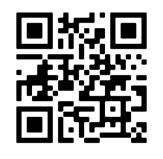
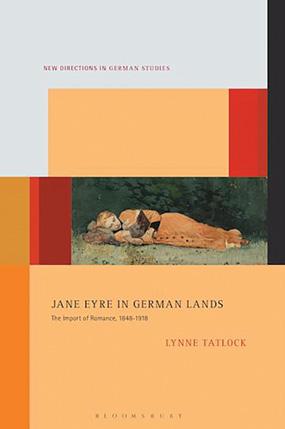



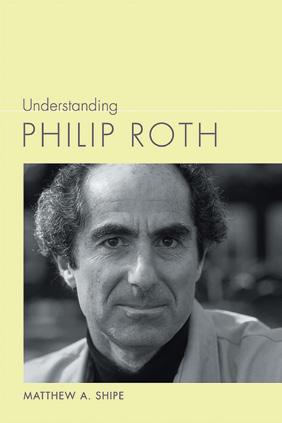


Emily Gerber, AB ’22, says the Danforth Scholars Program financially enabled her to attend WashU and encouraged her to take risks that led to her greatest experiences as an undergraduate. The scholarships, which provide full and partial tuition, are awarded to entering students who personify high ideals and whose lives show integrity, selflessness, and dedication to scholarship, leadership, and the community.
The financial support was of course vital to Gerber’s success, but she says the opportunities provided by the Danforth Scholars community also made her feel like she belonged, encouraged her to try new things, and allowed her to explore and discover new passions. The program gave her a supportive community of peers and mentors, several opportunities for civic engagement and service learning, and access to a weekly seminar covering topics for life as a college student and beyond. It was the encouragement of her Danforth network that prompted her to apply for student leadership positions that focused on welcoming and supporting first-year students.
“I was always interested in being a part of something bigger than myself,” she said. “This area of higher education seemed like a perfect way to both mentor students and grow as a professional myself.” After graduation, Gerber applied for a position in WashU’s Student Transitions & Family Programs. “I want to help students feel comfortable taking risks that will help them find themselves, the way people helped me find myself.”
OnOctober 6, Chancellor Andrew Martin announced the launch of Make Way: Our Student Initiative. In addition to garnering vital support for scholarships and fellowships, the initiative aims to provide support for students outside the classroom. Emily Gerber’s story demonstrates that a sense of belonging and access to opportunities are just as important as financial support. Each student should be able to experience all that WashU has to offer — beyond the world-class education offered in their coursework.
Many of the most memorable — and formative — experiences happen outside the classroom, and creating a best-in-class experience is how Washington University distinguishes itself and differentiates our students upon graduation.
These experiences have been making a difference in the lives of WashU students for decades.
Seth Eisner, AB ’92, was an early winner of the Bemis Scholarship for Undergraduate Research in Europe. As a history major, he used the award to visit archives in Paris and Rouen, France. But he says it was the experience outside of his coursework that had the greatest impact on him.
“It was the first time I had left the country,” he said. “The experience of having to navigate an unfamiliar place where you don’t speak the language is unparalleled.” Eisner believes more undergraduate students should have the opportunity to travel abroad, and he gives back to WashU to ensure that more can. He says traveling abroad on his own built his confidence in risk-taking situations. “It provides an
opportunity to practice getting out of your comfort zone and lets you know that you are capable of taking on the unknown.” For Eisner, the trip expanded his willingness to pursue things simply from a place of curiosity. He spent the first part of his post-college career following his curiosity into different educational opportunities and positions. He eventually landed at Microsoft, where he has been now for 21 years, currently as the CFO for product finance.
As an undergraduate, Emily Dewald-Wang, AB ’19, spent many days in the Tyson Forest Dynamics Plot, a 25-hectare oak-hickory forest. She was part of a group working to understand how prescribed burns and natural enemies shape the structure and composition of tree communities. Working in the field of ecology — and in the literal field — left a lasting impression. “The experience of working on a large field crew, in a small lab, and on my own independent research project at Tyson were by far the best parts of my undergrad career,” she said. The mentorship she received and the type of work were influential in her choice to study ecology in grad school. And it’s an experience she wouldn’t have had without the financial support from the Lennette Field Research Award.
After graduation, Dewald-Wang was accepted to UC Berkeley’s Department of Integrative Biology’s highly selective graduate program. She initially worked on cropassociated microbial pathogens and symbionts but has since transitioned back to forests and wild trees. She’s studying coastal redwoods and hopes to incorporate an angle on wildfire and conservation into her research.
Deborah E. Meer, AB ’95, organized an Interfaith Progressive Dinner in November 1993. She says it was the highlight of her WashU undergraduate experience. The event united a group of student leaders for an unprecedented opportunity to share their worldviews, with the singular goal of promoting interfaith relations on campus. Sunni and Shia Islam, Sikh, Christian, Jewish, Bahá’í, and agnostic students presented their religious views.
“It was meaningful to me because I felt kindred with these students: Just like me, they wanted to learn about people different from themselves, with compassion and curiosity,” Meer said.
“And they felt safe in the environment that WashU readily provided.” The experience had such an impact on Meer that she set up an endowment for interfaith initiatives to provide similar opportunities for current and future WashU students.

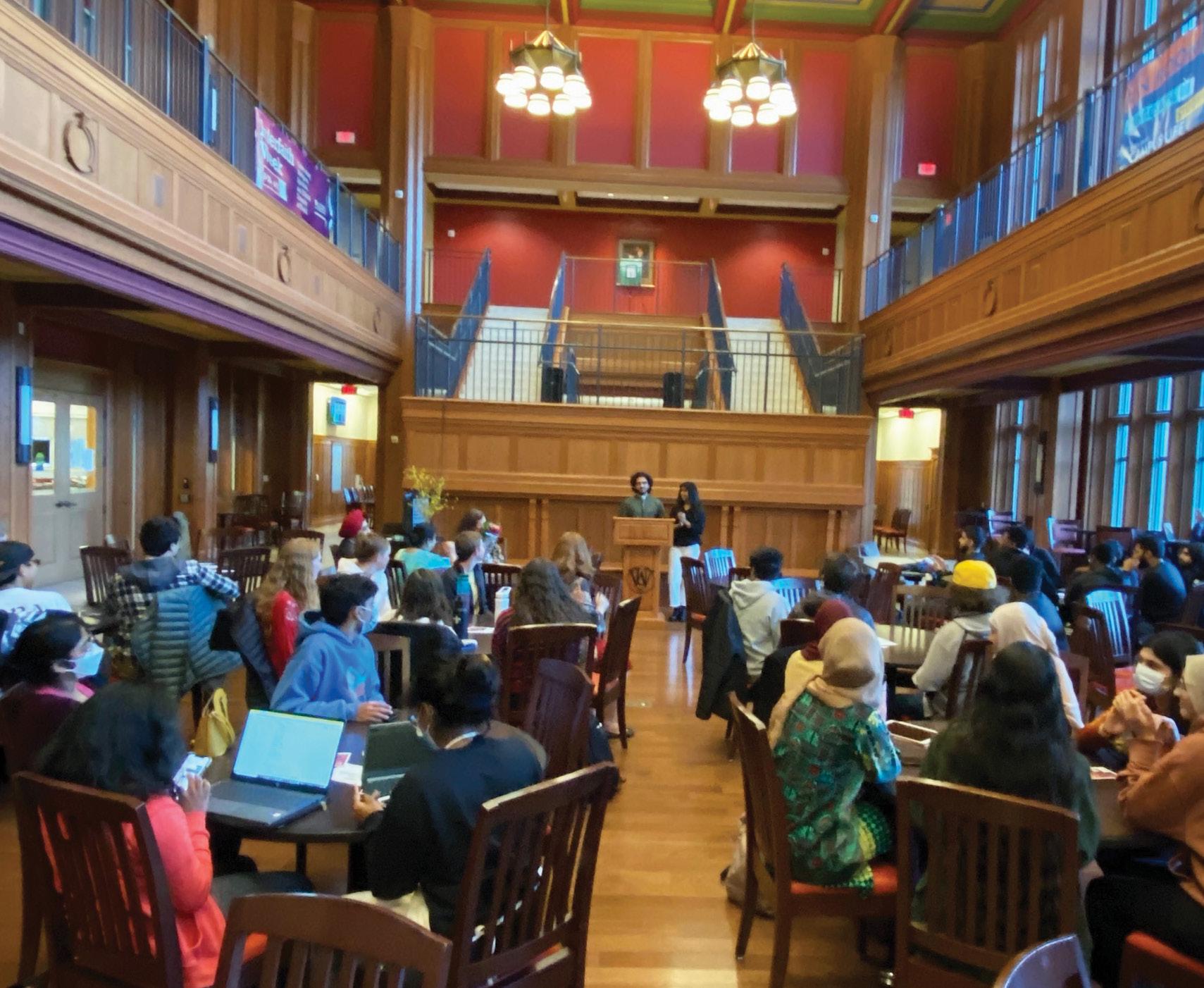
“I see what’s happening on campuses around the world, where students are harassed because of their religious beliefs. I feel an obligation to do something tangible in response. And WashU students are natural leaders. There is no university or student body better prepared to actualize the values of compassion and dignity.”

Learn more about WashU’s Make Way initiative.
MakeWay.wustl.edu
Left: Last March, the Office for Religious, Spiritual & Ethical Life hosted an Interfaith Celebration Dinner, much like the one Deborah Meer organized as a student in 1993. Right: Emily Dewald-Wang recording tree census data at the Tyson Forest Dynamics Plot in the summer of 2018.

Barbara Morgan Detjen, AB ’70, discovered her interest for medical research while still in high school, when she first studied and wrote about ribonucleic acid (RNA). “I was really fascinated with the processes that are the basis of how life works, like enzymes and other proteins being encoded in nucleic acid all the stuff that happens below the level of the cell,” said Detjen.

Detjen wanted to stay in her hometown, so Washington University was her top choice for undergraduate education. She immediately dove into science courses and eventually landed on a major in biology. She joined the Alpha Chi Omega sorority and met her future husband, David Detjen, AB ’70, JD ’73, at a campus event.
It was a tumultuous time to be on campus, with anti-Vietnam war activism heating up across the country and at WashU during her senior year. David was assigned a low draft number while he was studying abroad in Germany. Detjen sent an aerogram to let him know so they could start considering contingency plans. He ultimately received a medical deferment because of an injury he suffered while playing baseball for WashU.
They both ended up staying in St. Louis for graduate school. Over the next eight years, Detjen joined a lab, secured funding, and wrote her dissertation on the structure and biological properties of poliovirus ribonucleic acids. She had her first child the same year she completed her doctorate in microbiology at St. Louis University. She said, “In the 1970s, the prevailing assumption was that you could be a good scientist or a good mother but not both.”
After a postdoctoral traineeship in the lab of Robert Thach at WashU, Detjen and her family moved to New York, where she began a postdoctoral position at Memorial Sloan Kettering Cancer Center working in a lab focused on flu viruses. When the position ended, she left academia and accepted a job in the newly created Lederle Biologicals business unit of American Cyanamid as a research virologist.
“I realized I’m more of a collaborator,” Detjen remembered. “Academia is cutthroat. It’s tough for women, at least it was then. But when I got to Lederle, it was a revelation. Industry was not what academics had led me to believe. There was plenty of good research going on, and everyone there was interested in my success. They all wanted to help me, regardless of what division they were part of at the company.”
At Lederle, Detjen found that her WashU courses had prepared her for writing and sharing information with her team and the company at large. “I had been working in the lab, and I was involved in trying to get a small biotech to collaborate with us. My supervisor brought me along to a meeting, and because I wrote such good summaries of what we discussed and what needed to be accomplished, they asked me to be a project manager,” Detjen said.
She credits a specific WashU professor for equipping her with the right skills at this turning point in her career. “I took Biology 101 and 102 as a sophomore, and the professor, Garland ‘Gar’ Allen, was terrific. He got you really excited about the material. But in addition to the science, he taught us how to take notes using the Cornell note-taking method,” she said. “That method is how I was able to summarize the meeting so well!”
Detjen’s new appointment was the first time that Lederle Biologicals had a project manager. She was responsible for
collecting, synthesizing, and sharing information from the project teams so that leadership could determine which projects should be prioritized or shelved. She would go on to manage vaccine development teams at Lederle before becoming a director leading project teams at LederlePraxis Biologicals, Wyeth-Lederle Vaccines and Pediatrics, and Pfizer, where she served as senior director of vaccine development management for nine years. In 2017, Detjen was awarded the Pfizer Worldwide Research and Development Achievement Award for leading an international team that accelerated a key milestone in the development of the company’s investigational Clostridium difficile vaccine. Reflecting on her career, Detjen is proud of the way she was able to use all her training — from Biology 101 note-taking to doctoral dissertation writing — to advance vaccine development, even when those developments were incremental or behind the scenes. But perhaps she’s even prouder of the systems she put in place as a project manager. Moving a vaccine from early-stage development to largescale clinical trials, as the world has observed throughout the COVID-19 pandemic, is an incredibly complex process.
Project managers like Detjen keep things moving.
Although her interest in the building blocks of the cell never wavered — from a research paper in high school to management at one of the world’s largest biopharmaceutical companies — she found value in the broader Arts & Sciences education that pushed her beyond the lab. Her education gave her a valuable array of skills. On occasion she would even think back to the child and adolescent psychology courses she took as an undergraduate. “I often say those classes were the most useful to running project teams,” Detjen joked.
Detjen’s and her husband’s affinity for WashU rubbed off on their daughters. Andrea earned a degree in history from WashU in 2000, and Erika earned her juris doctor in 2010.

As a vacation destination, Kiruna, Sweden, leaves a lot to be desired. You won’t see the aurora borealis during the summer months. Instead, you may forget there are even stars in the sky because the sun never sets. You’ll also experience hordes of supersized mosquitoes — far more than you’ve ever had the pleasure of meeting in St. Louis! But it wasn’t the prospect of a dream vacation that brought me to the small Swedish outpost. I spent my summer there wrapping up the research project to which I’d devoted my entire graduate career.
For the last five years, alongside over 50 collaborators from the United States, Sweden, and Japan, I have been working to unlock new information about our universe. Last summer, we prepared to fly XL-Calibur, a 12-meter X-ray telescope, from Sweden to Canada on a balloon that would just barely squeeze through the St. Louis Arch. With this instrument, we planned to observe black holes and neutron stars, some of the strangest yet most fascinating objects in space.


On projects as big as XL-Calibur, with so many moving parts, it’s daunting to realize that one little mistake, slip up, or missed deadline could derail everything. And our team experienced far more than one obstacle.

In the aftershocks of the pandemic, scientific ballooning, like every other industry in the world, experienced shipping delays. We were told in April that the sea containers transporting our instrument wouldn’t make it in time for launch. Luckily, NASA agreed to fly the telescope to Sweden on a C-130. It then took four days to assemble XL-Calibur, giving us a little over a week to test and calibrate the telescope before our flight window opened. Unfortunately, our balloon remained stuck at a port in the Netherlands, and our helium accidentally found its way to the UK. It wasn’t until June 21 that all shipments finally arrived.
During the shipping delay, every few days it seemed that some new issue would arise. We had team members return home to wait, several cases of COVID, a blown fuse, and a serial port failure. Most were resolved with only minor headaches, but it soon took
a toll. Out of nearly 30 collaborators who made the trek to Sweden, only four remained in the Arctic Circle the entire 76 days: Andrew T. West, Hiromitsu Takahashi, Brian Rauch, and me.
During my two and half months away, I missed my son’s 18th birthday and my sister moving across the country. The isolation became somewhat taxing before we’d made even one attempt at launching XL-Calibur, but I knew I couldn’t walk away, even for just a brief visit home. I couldn’t stop thinking, “What if I don’t make it back in time and miss the launch that I’ve based my entire graduate career on? What if someone finds something wrong and I’m not there to fix it?”
Our first launch attempt on June 25 lifted everyone’s spirits, but the feeling was short-lived. Balloon flights are always at the mercy of the weather. If the winds aren’t just right or there’s rain in the forecast, you aren’t launching. If the sun isn’t up long enough, you have no way to power your electronics with solar panels. Our launch window, which at first seemed long, quickly dwindled. We showed up another six times before XLCalibur finally disappeared into the clouds on July 12, scant days before the launch window would slam shut on July 15. XL-Calibur’s launch was one of the most beautiful days we experienced in Sweden. After so many things had gone wrong, the perfect weather and smooth launch allowed the tension of the last two months to float away along with the balloon, but it was only a temporary relief. Twenty-four hours after launch, we experienced an anomaly that would make observing our
black hole targets incredibly difficult for the remainder of the flight. As disheartening as that moment was, we still had a telescope to operate. We gave ourselves a pep talk and spent the next seven days operating, observing, and analyzing as much data as we could.
As a non-traditional student, I’m used to breaking barriers and being a statistical outlier, but the sheer number of things that veered off course in Sweden seems well outside a normal distribution. Even so, the mission was ultimately a success. We learned a lot about the instrument and are more aware of the challenges we may face when XL-Calibur flies again.
The fact is that science can be hard, and messy, and so frustrating. But it’s also incredibly rewarding. For me, managing the mission, seeing the tangible results of our work, and eventually getting XL-Calibur off the launchpad provided both a rich experience to conclude my graduate career and a lifelong lesson in the power of persistence.
Lisalda, a graduate student in the Department of Physics, uses X-ray

and
the
holes.
of
